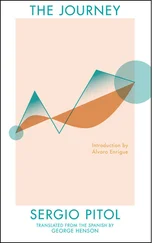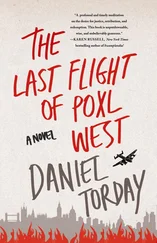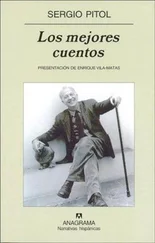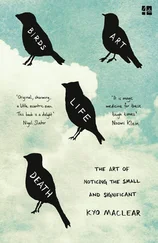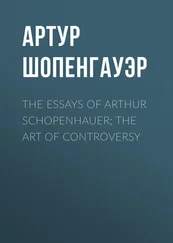I try to watch myself, to be careful not to manufacture tastes, fence myself in. I could cite impressive titles; swear that each one is a bedside book. I would be lying. On a trip to New York, a thousand years ago, a female friend pressured me to acquire the six volumes of The Tale of Genji , written by Lady Murasaki in the tenth century and translated into English by the eminent Arthur Waley. My friend claimed to be sure that when I returned to Mexico I would devour them immediately, that those books written ten centuries ago had been patiently awaiting me; she did not say that they would come to influence my literature because at that time I did not have the slightest idea that one day I would begin to write. The influence did not happen, for the simple reason that even today there are still books with uncut pages in my small Japanese section. I have not read the Alexiad by Anna Comnena, which I found in a magnificent secondhand bookshop next door to the Hotel Metropol in Moscow — an edition in perfect condition, translated into English by Elizabeth Dawes. The manager of the bookshop lectured me on the work, to which he always referred as “the golden rose of Byzantine letters.” He assured me, among other things, that it was one of Bakhtin’s passions. I have leafed through it once, but so far have not found the energy to go any further. Anyway, as long as I am confessing, I will state that I have not even read Schopenhauer’s Parerga and Paralipomena, a book that changed the lives of Borges, Mann, and many other famous writers. At this point, it is possible that I will never get to it, but on the other hand, I am certain that I will still reread several of Dickens’s, an author who in my youth caused more than a few select spirits to wrinkle their nose.
Reading is a secret game of approximations and distances. It is also a lottery. One arrives at a book by unusual means; one stumbles upon an author by apparent coincidence only to never be able to stop reading him. I have quoted in articles, in interviews, in the body of my own novels several writers to whom I consider myself indebted, but never, as far as I can remember, did I mention one of my principal sources. Recently, while writing some notes on Carlos Monsiváis, I found in his anthology of chronicles some pages dedicated to Gabriel Vargas. Stumbling upon the image of Borola, seeing her, nearly naked, shake her long-legged body, marked a beautiful reunion. She sang and danced to her battle hymn:
I move my hips a lot.
I shake them when I walk.
Why do you give up on me?
I can’t help it, you see…
Doing cucuchí, cucuchí …
Doing cucuchí, cucuchí …
I move cautiously, doing arabesques, as if afraid to arrive at this obligatory confession: My debt to Gabriel Vargas is immense. My sense of parody, my play with the absurd, come from him and not, as I would like to be able to boast, from Gogol or Gombrowicz. Who is Gabriel Vargas? you might ask. Well, he is a fabulous cartoonist, one of whose comic strips, perhaps the most famous, was called La familia Burrón .
In mid-1953, after spending a few months in Venezuela, upon returning to university, I ran into two dear friends, Alicia Osorio and Luis Prieto. They greeted me with all the warmth in the world, only to start talking seconds later about Borola, Reginito, Cristeta, and Ruperto, and laughing hysterically as they celebrated the hijinks of those zany characters. Every time I tried to interject into the conversation some incident from the trip, my stops in Havana and Curaçao, the season in Caracas and, above all, stories from the sea-crossing on the Francesco Morosini and the Andrea Gritti , my first boats, they appeared to be listening to me, but at the first pause, they’d return to the world of Borola. The next day, Luis brought to school the latest issue of La familia Burrón . From that day on, I was a devoted reader for many years.
Occasionally Luis Prieto, Monsiváis, and I would run into each other at dinner at the homes of mutual friends, and on more than one occasion at the gatherings we unleashed torrents of laughter as we discussed one of the comic strip’s new episodes. Nothing mattered to us outside of whatever was happening to Borola Burrón. Our more tolerant friends, when they realized the waters we were swimming in, treated us like victims of late measles from which we would eventually recover. But there were those who took Borola’s circumstances personally, as if her horrifying stories penetrated hidden parts of their being; they began to behave with exaggerated Proustian refinement; they cooed like doves about Vermeer, Palladio, the china they had inherited from grand-maman , their first summer on the Côte d’Azur. They switched from Spanish to French in the middle of brilliant and witty phrases, as if every gesture, every word, functioned to maintain as much distance as possible between them and the tenement-patio where the Burróns lived. They were annoyed by the specter of a Mexico that they did not wish to acknowledge — a radiant, barbaric, innocent, and grotesque Mexico that they could not accept, with a much more vibrant language than the foppish grisaille in which they communicated. Distancing oneself from that world meant not remembering the aunt who ran away with a nobody and ended up working in a French dry cleaners, a very respectable business, certainly, even elegant, but a dry cleaners nonetheless; or the grandfather’s rambling deathbed confession about the origin of his fortune, which, in the end, could be the product of senility, but for a long time troubled the family. Someone else might recall the uncle who showed up once or twice a year with grease spots on his tie or lapels. And then begin to talk again, now in a shrill voice, about Vermeer, the moment when Swann first entered the Guermantes’s house, César Frank’s sonata, and other niceties.
Luis Prieto and I visited Don Alfonso Reyes every other week. One day, either by chance or by choice, the conversation turned to Gabriel Vargas and his comic strip; he applauded the appeal of its popular speech and extraordinary melodic styling. When we repeated it, no one believed it.
We were blaspheming! When he said the same thing later in a newspaper interview, some must have thought that, like the aforementioned grandfather, our polygraph was doddering.
The Vargas comic strip recreated the prevailing melting pot of Mexico City and its immense mid-century social mobility. La familia Burrón was organized around a married couple: Don Regino Burrón, the sole proprietor and operator of El Rizo de Oro , a beauty salon in a poor neighborhood, and his wife Borola Tacuche, who lives a life of eternal conflict. Don Regino is a paragon of modest virtues — wisdom, honesty, thrift — but is also the most perfect expression of ennui and lack of imagination. Borola, on the other hand, represents anarchy, abuse, cheating, excess, and at the same time imagination, fantasy, risk, insubordination, and, above all, the unfathomable possibilities of the joy of living. Determined to conquer the world, to make it to the top, she takes everything on: business, politics, and entertainment. She fails at everything. She returns defeated from each experience to her lair, the cacophonous courtyard from which apparently it is impossible to escape. But at the very moment she returns to her faithful Reginito’s side to apologize for her shenanigans and to swear never to return to her old ways, she’s already plotting a new adventure even more outrageous than the last. The secondary characters, the other family members, move in opposing circles. There’s tía Cristeta, the millionairess who lives with Marcel, her pet alligator with which she takes a plunge every morning in a pool of champagne; and there’s Borola’s brother, Ruperto, a hapless gangster and perpetual fugitive from justice whose face we never see. The main couple is only able to reconcile for a time: revolt and submission do not a happy marriage make. The world outside this courtyard of destitute houses is governed and sustained by corruption and arrogance: corrupt police, corrupt inspectors, corrupt judges, and corrupt bureaucrats. I imagine that the vast majority of readers, myself included, sided with Borola, for whom all the recriminations, sermons, moralizing, and advice go in one ear and out the other. The effect is the same as that produced by many of the English novels that scrutinize Victorian morality. Who does not prefer the unscrupulous Becky Sharp over the whitewashed tombs who inhabit Vanity Fair ? Who among us who has read Treasure Island at the appropriate age does not prefer Long John Silver, the ruthless and seductive pirate, to the solemn gentlemen who advise Jim Hawkins in his business and who, let us not forget, will share in the coveted treasure on which the novel is based?
Читать дальше

